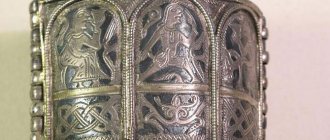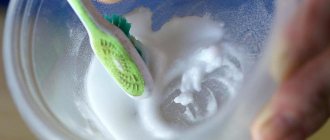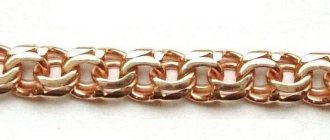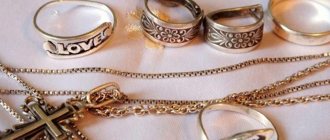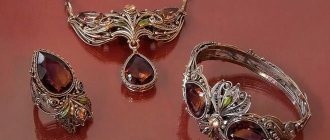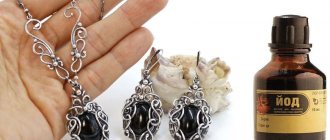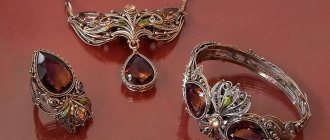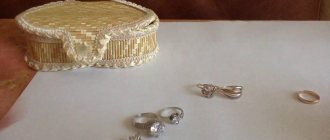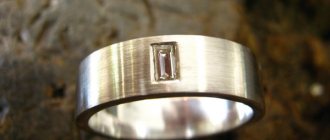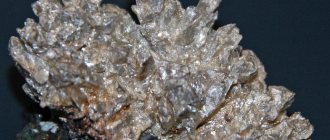!Text updated and corrected in July 2020
Niello (not to be confused with denigration:) is an ancient technique of decorating a wide variety of gold (but more often silver) objects by giving them shades of black. After using this technique, the surface texture of the object becomes more contrasting and richer, be it an ornamental design or relief details. True, it is sometimes used to hide minor defects, such as connecting seams.
And here it is very important to immediately understand the main thing: the word “blackening” can mean completely different technologies, from the traditional solid “niello” (niello), a special alloy permanently fused to the base metal, to the modern lightweight version (“sulfur liver”), in everyday life called “oxidation” - a chemically applied sulfate film of a given thickness, which can be removed using the same chemical methods, and which can also thin out over time. Almost 100% of the assortment of “blackened” jewelry in modern jewelry chains is the second option, “liver of sulfur.” And now about everything in a little more detail.
Silver and its types
Silver is part of the main group of precious metals, which are united by inertness, natural rarity, and high ductility. This element has a silver-white color, better thermal conductivity and is capable of reflecting up to 95% of light.
In its pure form, the metal is not used to create jewelry because it does not have sufficient strength. Silver is doped with various impurities, which makes it possible to improve wear resistance, casting qualities, and change the shade and melting point.
Blackened earrings and ring
There are several varieties of lunar metal, which differ from each other in the way they are decorated. The same silver alloy can look different if finishing operations such as blackening or filigree are applied to it.
Matte
Externally, matte metal resembles sterling. Using this technology, they create exclusive souvenirs, decorative items, and writing utensils.
The matte alloy consists of 92.5% silver. Usually the remainder is copper, but sometimes the material is doped with other impurities.
The surface of the material can acquire a matte tint using one of the following operations:
- Sandblasting;
- Application of vibration heating;
- The impact of a special essence;
Matting with sandblasting is used in large factories, since this method is the most expensive. Special granules are loaded inside the apparatus that processes the surface. Using mechanical action, they give the surface a matte tint.
Features of black and silver manicure
Black and silver is a favorite nail design. However, before deciding on such a design, you should carefully study all the intricacies of this combination.
Features of black and silver design:
- The combination of charcoal and silver can be achieved in many ways; there are many techniques for this in nail art. This makes it possible to use this design with almost any image. But it should be taken into account that the color of accessories and decorations should be in harmony with the silver shine of the marigolds.
- Charcoal color is ideal for girls with dark or tanned skin. Those with lighter skin should reduce the amount of dark polish, focusing on silver.
- Hygienic treatment before applying the coating must be carried out perfectly: the cuticle is carefully removed, the nail plate is carefully thought out and processed. Otherwise, your hands will look sloppy; black color will only highlight all the flaws.
- Before applying black and silver polish, you should cover your nails with a clear base. This is a mandatory condition, since the black color tends to be absorbed into the nail plate; after removing it, doing a light manicure will be very problematic. In turn, silver varnish contains small iridescent particles that are difficult to remove from an unprotected nail without damaging the natural top layer.
- Silver color in large quantities is more suitable for special occasions. For everyday manicure, you should choose a design with a minimal amount of silver varnish.
- Silver on a black background is more appropriate in the cold season, as an association with snow, but it is also quite acceptable in the warm season.
- A manicure with a dark charcoal color in its design reveals all the imperfections more than any other: uneven lines, clumsy designs. Therefore, if you do not have the proper experience, it is better to turn to a professional master.
- Peeling nail polish on dark nails is more noticeable than on other colors. To preserve the beauty of the design, it is necessary to perform a manicure with shellac coating.
You should carefully consider each point so that the manicure pleases the eye, looks stylish and appropriate.
Black and silver manicure for short nails
Short nails are more demanding of perfection when it comes to charcoal color. Pre-treatment should be carried out with particular care. Don't forget about gel polish, since silver-charcoal design on short nails is more often used for everyday life. If you add more silver glitter to the dark polish, you can give your nails a unique festive look.
Particular attention should be paid to the shape of the nail plate. A design with a combination of black and silver looks better on a square shape. However, this configuration will not suit girls with plump, short fingers, since the dark color will only add heaviness and roughness to the hands. The most suitable shape in such cases would be an oval, especially since the square has recently been losing its position.
Attention! On short nails, a design that visually elongates the fingers, with a predominance of silver, will look good, for example, vertical stripes or an ombre manicure.
Long nails black and silver
On long nails, the charcoal-silver design looks especially beautiful; the manicure always looks bright and catchy. This combination of length and color is more suitable for special occasions. It could be some kind of celebration, a themed party or a rock band concert. For everyday life, it is better to choose a black and silver design as an accent on one or more fingers.
The shape of the manicure can be absolutely any - square, oval, peaks and others. But don’t forget that the square shape is going out of fashion, and too pointed nails are always scary and look like the claws of an animal. Too long and sharp nails of a dark color are not suitable for girls with thin fingers, as their hands will visually look like a rake.
What is rabble? History of technology
The technique of blackening silver has been known since the dawn of civilization. The oldest work, a blackened silver horn found inside a pagan burial, dates back to the end of the 9th century.
Jewelry made of blackened silver
In Russia, metal began to be blackened in the 10th century; archaeologists have found many pendants, bracelets, and moonlights of that era, processed using this technique. Silver niello has become a real diamond in the crown of Russian jewelry. The traditions of the ancient craft are preserved by many craftsmen to this day.
The technique can be briefly described as follows: crushed niello is sprinkled on a metal surface that has previously been engraved. The surface is fired, after which a black tone appears on it, firmly fused with the base.
Silver, gold, platinum, and many other metals can be blackened.
Historical information
Silver blackening at home began for the first time in the 17th century in the Russian Empire. During this era, craftsmen appeared in the city of Veliky Ustyug who began to make the metal darker. Trade routes from Siberia and other countries passed through this area for a very long time. In almost every courtyard, craftsmen appeared who developed their own techniques for creating jewelry from blackened silver.
All stages from embossing the product to its darkening were carried out manually. Due to the fact that the masters refused to tell the secrets of the procedure to anyone except their family, the craft almost disappeared completely. Then they began to apply the technology on a large scale. In addition to cutlery, furniture and jewelry, they even made silver paintings - portraits, landscapes, still lifes. Even today you can find antique products by Russian craftsmen in specialized and antique stores.
There are several types of metal processing styles:
- Velikiy Ustyug;
- Dagestan;
- Israeli.
Jewelry made in Veliky Ustyug is distinguished by soft designs, floral and naturalistic motifs, and geometric patterns. Dagestan jewelers work with the help of a chisel; they create drawings of strict forms, deep clear engraving, and use shotting together with blackening. The Israelis try to create products in such a form as if they had recently been found by archaeologists during excavations. Their works are distinguished by embossing, which ages them.
Methods for obtaining blackened silver
There are several ways to produce black on precious metals. Silver alloys tend to oxidize over time, but blackening can easily hide this flaw.
Silver bracelet with blackening
Mechanical method
The technology involves manual application of dark patterns. First, a special paste is made from graphite with iron oxide and a small amount of turpentine. The resulting paste is used to cover those areas of the product that will contrast with the silver background.
The product is allowed to dry completely, after which the excess paste is removed with a soft cloth soaked in alcohol.
A variation of the mechanical method is electrolysis. Both methods can be done at home.
Chemical method
The chemical method is the most common because it is easy to implement and also contributes to the formation of a durable coating.
The step-by-step process looks like this:
- The engraved product is sprinkled with manganese, copper, sulfur, and lead. The final shade will depend on the amount of sulfur; the more of it, the deeper the tone.
- The product is placed inside the oven. Under the influence of temperature, the powder eats into the relief of the object.
- The finished work is removed from the oven and allowed to cool.
Oxidation
The method involves alternately placing the processed object inside special essences. The technology allows you to cheaply obtain a uniform coating on a surface of any complexity.
Oxidized metal is often passed off as blackened. Visually, the materials are indeed similar, but vary greatly in quality.
Classic blackening of silver is more durable. Chemically produced oxide film wears off much faster. The service life of such a coating will depend on the thickness of the applied layer.
Rhodium plating and ruthenium
Rhodium is a rare noble metal. With its help, silver is protected from deformation and painted gray-black.
Traditional blackening (niello)
Briefly, the essence of traditional blackening (English blackening, blackened silver, historically - niello, Italian niello, from Latin nigellus, diminutive from niger - black) is this: a “black” alloy of silver, copper, lead and sulfur is smelted into the base metal . The alloy for blackening is melted into recesses (approximately 0.3 mm) formed by one of the methods of your choice - engraving, chasing, etching the product or gouging. When heated, a chemical reaction occurs between the silver and the melted mixture. As a result, in addition to new decorative properties, the blackened product also receives practical ones: it does not fade and does not require special care. The palette of niello is wide - from silver-gray to black-velvet tones.
Niello is very beautiful both on high-grade gold and on silver (for example, blackened works using the niello technique by the Italian jeweler Gigi Mariani). On copper, low-grade silver, and brass, the niello crumbles and falls off. However, it is extremely difficult to produce a high-quality, “non-flying” composition of niello for gold, which is why niello on this noble metal is rare. In common practice since ancient times, silver blackening is most often used - elegant and durable. Well, what if you still want gold? By protecting the areas with ready-made niello with a special varnish, you can gild the silver - which is not a solution!
Traditional silver blackening techniques
Perhaps the technique of blackening metals is similar to the champlevé enamel technique. But, unlike store-bought enamel compositions, you need to prepare the black one yourself (and immediately apply and fire it).
Factory galvanization is everyday life of modern technology, but not so long ago the methods of blackening silver were different. Let's mention three:
- so-called Germanic
- pre-revolutionary Russian and
- modern Moscow
In the “Germanic” recipe, lead is slowly poured into the copper-silver alloy, stirring well. The ternary alloy is poured into heated sulfur powder with constant stirring, stirring to ensure good interaction of the parts. Then the mixture is poured into water. The frozen pieces of niello are finely ground in a porcelain mortar in the required dose - only fresh, wet niello mass can be applied to the product.
According to the “Russian” recipe, the ternary alloy is not poured into sulfur powder, but sulfur is added to the alloy in portions, after which the finished niello is poured not into water, but into a cast-iron frying pan. This solid “pancake” is crushed into pieces and melted again with the addition of sulfur and flux. And so on up to three times, if you need extra-class rabble. The finished mobile is pounded in mortars and sifted through a fine sieve.
The third is the author’s recipe of Professor A. G. Spassky (Moscow Institute of Non-Ferrous Metals); prepare silver sulfide, copper sulfide and lead sulfide separately and alloy them together in the required proportions. Then they melt and cool in a strictly defined way.
Methods of applying niello
Textbooks for jewelers (for example, “Technology of jewelry production, V.P. Lugovoy, 2013) tell that there are two ways to apply niello - dry and wet. When dry , the surface is moistened with the necessary solution and finely ground black powder is applied. Carefully dry, fire in a muffle (300-400 ° C). With the wet method, the composition is applied in the form of a creamy slurry diluted with water. The mixture is applied thickly and tightly into the recesses with a brush or spatula. Waiting for the water to evaporate. Afterwards, when heated in the muffle, the niello softens, melts, flows into the design and covers the object. This is a sign to remove the item from the stove. Small decorations can be melted with a soldering gun. The heat flow is concentrated on the base metal, and it is better to heat it from the reverse side. When the mass melts, heating is completed.
Now the product is “cleaned up” by scraping or filing with a file (“removal”) until a pattern appears. The main thing is not to grab or cut down the ornament itself. Then the product is ground and polished, revealing the entire pattern. Often the background of the object is additionally engraved or shot (shotting is the application of dots, strokes or notches on the surface of the metal).
Black silver price per 1 gram
The cost of a silver alloy depends on its purity. You can buy jewelry made of blackened silver in various jewelry boutiques, buying stores, pawn shops, and on Internet sites.
In order to find out the current cost of blackened metal, it is convenient to use the table:
| Try | Price per 1 gram |
| 960 | 180 rubles |
| 925 | 160 rubles |
| 875 | 130 rubles |
The actual cost largely depends on the pricing policy of the selling store.
Use of blackened silver
The material has many fans around the world. The “antique” effect attracts buyers of all ages, and gives craftsmen ample opportunities for creativity.
During the Soviet era, the “Northern Chern” plant was created, which produces products in accordance with Russian traditions. Silver objects are decorated with mythical images of Ancient Rus', city panoramas, and floral patterns. The product catalog of “Northern Chernya” is striking in its diversity and is expanding from year to year.
The relevance of black silver jewelry
Each jewelry boutique offers a wide range of products made from black lunar metal. In the display cases you can see rings, earrings, chains, rings, pendants, bracelets, amulets made from this material.
Products from Kubachi, a Dagestan village where the legendary forge of exclusive items made of blackened metal is located, are in great demand. The technologies of Kubachi fishing are kept secret; all products are created by hand. Kubachi craftsmen use special ornamentation techniques, such as tutta, marharai, tamga.
The scarlet precious metal is used by famous jewelry houses to create collections; it is perfect for the most stylish design solutions.
Stones for blackened silver
Often products are inlaid with amethysts, amber, cubic zirconia, diamonds, and pearls. These stones look most advantageous with black and white material.
Original or fake?
Blackened silver, although at first glance some may not like it, turns out to be far from being the last relative in the jewelry business. The price of blackened metal may differ from the price of ordinary silver. You can't find niello in oxidized silver either. Oxidation, simply put, is an oxide film that protects the metal from tarnishing. It gives the product attractive properties. If for some reason the niello peels off the silver, it means it was oxidized.
By and large, you can get rid of blackening on jewelry. If you boil the product in a soda solution with foil, it will lighten. Housewives often practice this technique in everyday life, getting rid of any dirt, both on cutlery and on any other surfaces. A well-known gentle way to clean jewelry is to pour it in a glass with detergent or just shampoo and forget about it for a few days. If you don't believe me, don't waste your time and fill it with "Fairy".
Advantages and disadvantages of blackened silver jewelry
The material has a number of undeniable advantages:
Attractive appearance;
Does not require careful regular care;
Has bactericidal, antifungal, antiseptic effects;
Stronger than ordinary silver;
The disadvantages include the following characteristics:
More expensive than precious metal without sputtering;
Cannot be cleaned using many traditional methods;
Silver with blackening
Use of decorations
Blackened silver has long been popular, especially among adult women. It highlights their noble beauty, elegance and style. Ladies often buy massive earrings and pendants, wide rings and bracelets. On thin items, niello does not look so elegant. Although all the decorations are made in a different style depicting floral or geometric motifs.
Often, products are complemented with precious and semi-precious stones, which set off the dark material. All items are made exclusively from 925 sterling silver - the most durable silver. It does not require frequent cleaning and is not afraid of impacts and scratches.
Products using the blackening technique are suitable for almost any style of clothing, except sports and casual. Dark silver looks especially impressive on role players dressed as mythical creatures or historical figures. One of these styles is called elven; kafas, pendants, and headdresses made of precious metal are suitable for it. Blackened material goes well with evening dresses and summer sundresses. It is not customary to wear it under a business suit or casual wear.
It is recommended to pay attention to your skin color before purchasing. Dark-skinned brunettes are suitable for products made of light metal with dark patterns. For fair-skinned blondes and red-haired women, it is better to purchase jewelry made of black silver with almost white inclusions and patterns.
Rules for the care and storage of products
The jewelry is perfect for classic outfits, will be the highlight of a formal look, and is suitable for everyday wear. It is better to refrain from wearing them with tracksuits.
It is recommended to remove products before cleaning, visiting the pool, or training. If the jewelry is encrusted with precious stones, it should be protected from contact with chemicals and direct sunlight.
Products should be stored separately from other jewelry; jewelry bags or boxes with soft inner lining are ideal for these purposes. You can put chalk or silica gel inside the box; they will absorb excess moisture.
It is also recommended to store chains and rings separately, this will help avoid the appearance of creases.
Silver with blackening: care rules
The peculiarity of blackened products is that they do not require too frequent cleaning and polishing. But sometimes you still need to remove dirt and dust from them.
There are several gentle ways that do not harm such items:
- A solution of soapy water and a small amount of baking soda. It should be warm. The jewelry is immersed in the liquid for 10-15 minutes, then washed with warm water and wiped dry.
- Potato infusion. Peel one potato, cut into slices and cover with cool water. Immerse the product in a container with potatoes for 4 hours, rinse with water and dry.
- Dissolve one teaspoon of baking soda in a glass of warm water. Wash silver items with this solution.
Items made of blackened silver should be treated with care and precision. If this is jewelry, then it should be stored separately from other jewelry in a tightly closed box. Then it will retain its sophistication and perfection for many years.
You may be interested in: Palladium – is it a precious metal?
Cleaning methods at home
Caring for silver niello is much easier than caring for naturally colored metal. The dark surface is not subject to the formation of gray film and plaque. However, it must be cleaned of accumulated dirt.
Cleaning a silver chain
Soap solution
To prepare the solution, you will need soap, baking soda, and running water.
Mobile technology on silver
The essence of the first technique - niello - is the application of a special alloy of silver, lead, sulfur and copper sulfides onto the engraved part of a silver product. The decoration is filled with niello, based on the existing pattern. During heating, the niello is firmly connected to the silver, as a result of which the product receives additional relief and contrast.
Niello can be applied dry, when the surface of the product is treated with a special solution, after which niello powder is applied to it. In this production process, the product is dried and then fired in a muffle furnace at a temperature of 300 ° C.
In the case of the wet method of applying black, it is first diluted with water and then, using a brush or spatula, applied to the recesses in the product. When the water evaporates, the silver product is placed in a muffle furnace, where the niello becomes soft and flows smoothly into the pores of the design. At the end of applying the niello, the product is “cleaned” by processing it with a file until the design patterns appear.
Ways to tarnish silver at home
You can give lunar metal an unusual dark shade yourself. It is worth considering that the described methods will have a temporary effect. The dark shade will not be as durable and bright as with professional blackening.
Iodine staining
The method is ideal for products with a three-dimensional pattern.
You need to moisten a cotton swab with iodine, rub the pattern with the reagent, and leave until completely dry. After this, the pattern should be wiped with a damp cloth, after applying a little fluoride-free toothpaste to it. Convex parts of the surface will become light, hard-to-reach parts will darken.
Patination of silver with iodine
Impact of boiled egg
A brief description of the method is as follows:
- The chicken egg needs to be hard-boiled, peeled, and divided into two parts.
- The egg is placed inside a container with an airtight lid. In this container you need to hang a silver item by a thread.
- After a few hours, the product is removed.
Hydrogen sulfide vapor allows you to give the surface a uniform dark shade.
Using sulfur ointment and a hair dryer
Sulfur ointment is sold at any pharmacy; this inexpensive product is perfect for home blackening. Sulfur causes oxidation of the lunar metal, which contributes to the formation of a dark layer of silver sulfide.
Use ointment to lubricate those areas of the pattern that need to be darkened. Next, you need to set the hair dryer to full power and direct a stream of hot air to the treated areas.
After 5-10 minutes, you can begin polishing the product using a soft cloth and fluoride-free toothpaste.
Combination of shades and decor in black and silver nail designs
The main condition under which a manicure can be called black and silver is the presence of these colors in the design. This combination will make the simple design more stylish and sophisticated. With this design of nails, 2 types of varnish are usually used, each of which can become the leading one. Also, in a charcoal and silver design, the presence of other, usually neutral, shades (pink, white, beige) is allowed.
You can create a chic silver-black manicure not only by playing with colors, but also by combining different textures. Matte and glossy finishes give completely different visual effects.
Advice! It is quite possible to achieve silver shimmer on your nails without metallic polish. For these purposes, rhinestones, glitter, sequins, beads, and various stickers of both colors are used.
There are no strict rules regulating the design of the nail plate - it all depends on the flight of fancy of the master. It can be a bright, dark, extravagant design with small silver splashes or, conversely, a delicate girlish design with a charcoal accent on one nail.
Reviews
I purchased women's stud earrings made of blackened metal. The earrings have a simple flower shape, but they attract the eye thanks to the “antique” material. Previously, I was skeptical about blackening, I thought that it was an analogue of gilding. Now I’m thinking of completely switching to black silver products.
Maria L., Kostroma
Svetlana K., Moscow
I order silver jewelry through Avito from private craftsmen. The product is always high quality and exclusive. The last time I ordered a man's amulet for the neck. I was very pleased, amazing work, decent quality of material.
I never thought that fine jewelry could be called “rabble.” I purchased several rings made of blackened precious metal to complement my daily look. Even my husband didn’t stand aside; he bought himself a gray and black chain; it looks much more brutal than classic chains.
Zhanna R. g, Stavropol
Getting patina with an egg
A black-brown patina can be achieved using a boiled egg. The effect is the interaction of the metal surface with sulfur, which is released in the yolk at high temperatures. To do this, you must first boil the eggs, and only then add the copper product to the water. Depending on the size of the product, a different number of eggs will be required.
Another option. After the eggs are hard-boiled (10 minutes), they must be removed from the water and cooled. The peeled eggs are crushed and placed in a container with a wide bottom, and copper is also placed there. The container is closed for 20-30 minutes or more, depending on what color you want to get: over a longer time, the product will become darker. The main advantages of this method are simplicity and accessibility. The main disadvantage is that the effect most likely will not be long-term and the coating will come off.
Patina has excellent properties. For example, in numismatics, the value of an item depends on how uniform it is. Artificial turf cannot replace natural turf.
If the patina has a uniform structure and evenly covers the surface, then it is better to preserve it on the product. This especially applies to antiques and coins. To prevent damage to the top layer, it is necessary to care for the product and handle it with special care. Do not clean with abrasive products or tools. And it’s better not to touch the product with your hands.
But if it has chips, stains, looks ugly or is not uniform, then such methods will do just fine. If you want the patina to lay down evenly, then the old layer must be cleaned to a metallic shine.
Not a noble metal, but has long been used for the manufacture of banknotes and decorative elements
People paid attention to the ability of the material to change its color under the influence of time, taking on different shades (from green to black). The oxidation process, accompanied by darkening of the surface, can be accelerated - this is copper blackening
There are several ways to artificially cause patina (patina) on the surface of non-ferrous metal, giving it the appearance of patriarchy and antiquity.
